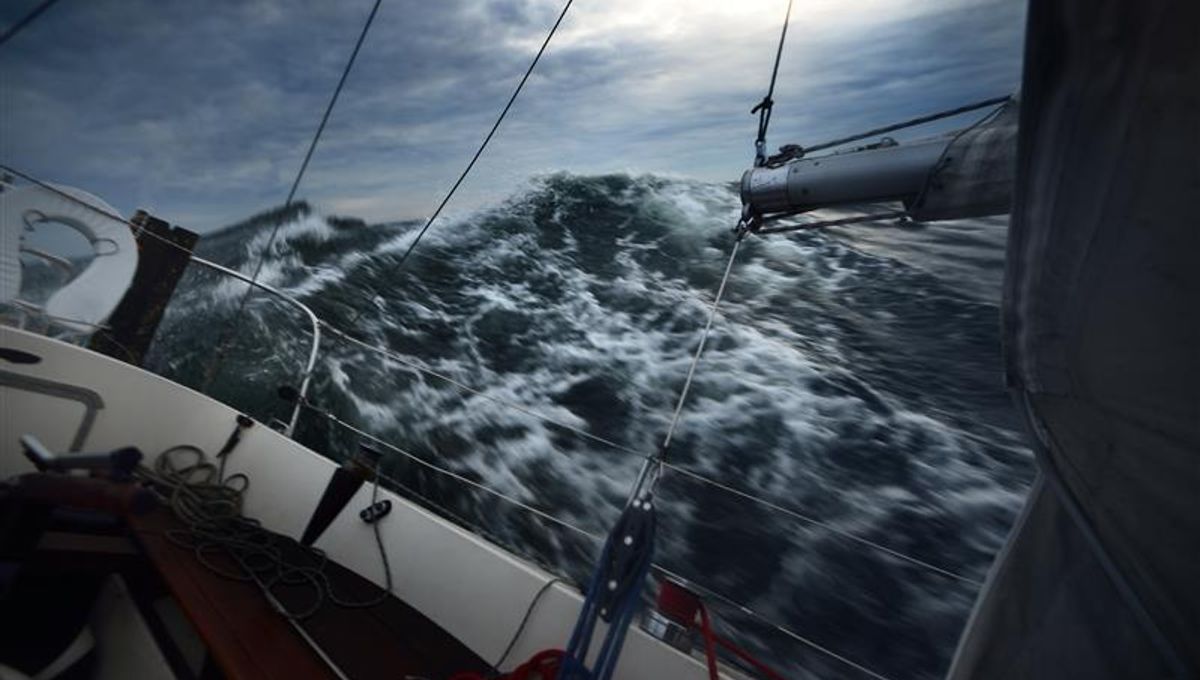
During the 1914-1917 Antarctic expedition, the crew of the Endurance experienced a harrowing journey after becoming trapped and eventually stranded in the Weddell Sea. The crew, led by Sir Ernest Shackleton, were forced to make an arduous trip across the notorious Drake Passage in a lifeboat to reach the coast of South Georgia Island.
The story of the crew’s doomed expedition is well known today, and while it highlights the remarkable ability of humans to survive against the odds, it also demonstrates the terrifying power of nature. But while the Drake Passage may be one of the most dangerous seas in the world, there are others that compete for the title.
What makes a sea dangerous?
Turbulent waters have been the bane of sailors and the stuff of legends for centuries. But when it comes to making an assessment on which are the most dangerous seas in the world, there are various factors that could be considered.
For instance, where is the sea located? Is it close to landmasses or is it extremely remote, like Point Nemo in the Pacific Ocean? Does it have any dangerous natural features, such as the presence of underwater ridges, narrow straits, or an abundance of icebergs? How strong and predictable are its currents? How often are there storms and how strong are their winds? What are the wave heights and what temperature does the water reach?
You could base the level of danger on the number of shipwrecks or maritime disasters that have occurred in a given sea throughout history, or which have the highest levels of piracy today.
Here are some examples of the most dangerous seas based on a mix of these factors.
Drake Passage
As mentioned above, the Drake Passage, also known as the “Sea of Hoces”, is a well-known deadly sea. Named after the English explorer and privateer Sir Francis Drake, the body of water is renowned for its stormy conditions and treacherous currents. At roughly 800 kilometers (500 miles) in width, the passage is the shortest crossing connecting Antarctica to Cape Horn in South America, and the Atlantic and Pacific Oceans.
The waters here are dangerous because there are no large landmasses anywhere at this latitude, so the currents, including the Antarctic Circumpolar Current (ACC), can flow without resistance, carrying enormous volumes of water. This alone can create dangerous sea conditions, but the Drake Passage is also notorious for extremely strong winds that create waves that can range from 9 to 12 meters (30 to 40 feet) in height.
The ACC, which is responsible for transporting between 100 and 150 million cubic meters (3.5 to 5.3 billion cubic feet) of water per second, also pushes icebergs through the Passage that pose a threat to any vessels attempting a crossing.
All these factors make the Drake Passage a deadly obstacle for those traveling to Antarctica, even today.
Bermuda Triangle
Few bodies of water capture the public imagination like the Bermuda Triangle, even if we rarely hear of new disappearances these days.
The Triangle is a 1.3-million-square-kilometer (500,000-square-mile) area of the Atlantic that extends between Bermuda, Puerto Rico, and the southern tip of Florida. Over the last century, this region has become infamous for the number of supposedly mysterious shipwrecks and disappearances that have occurred across its waters. These odd events have inspired innumerable explanations, which vary from the believable to the simply ludicrous, but the likely answer – unfortunately for the cranks – rests in mundane factors.
Statistically, there are no more accidents in this loosely defined triangle when compared to other areas of the ocean. In fact, the Bermuda Triangle does not even make it into a study conducted in 2013 that examined the most dangerous waters for shipping, which was based on accidents and incidents.
South China Sea
One sea that continues to be dangerous is the South China Sea. This part of the Pacific Ocean is prone to severe tropical storms and typhoons, especially in the monsoon seasons. This creates hazardous conditions for vessels traveling through its waters, which also have to contend with the “Dangerous Ground” – a large, treacherous area of shoals, sunken reefs and atolls, many of which remain uncharted.
These waters are perilous to navigate and many have strong currents that make them more dangerous. But unlike the other seas mentioned in this list so far, the South China Sea’s reputation is made worse for the ongoing geopolitical tensions in the region, with several countries laying claim to overlapping areas. These disputes have led to military confrontations in the past.
The South China Sea also has a long history of piracy, with vessels sometimes being attacked or commandeered.
Bering Sea
The Bering Sea, which is named after Vitus Bering, a Danish-born Russian navigator, is another notorious stretch of water that has claimed many lives over the centuries. Located between far eastern Russia and Alaska, the sea boasts a special blend of strong currents, shallow depths, sea ice, and hazardous weather patterns that make it dangerous to cross for large portions of the year.
The Bering Sea’s average depth is around 60 meters (200 feet or 35 fathoms), which produces shorter but more powerful waves. It is also considered one of the coldest seas in the world. In winter, the temperature over the northern and eastern parts of the sea can drop below -45°C (-49°F).
But while this stretch of water has gained a particular reputation since the television program Deadliest Catch showcased the perils of crab fishing on the Bering Sea, the reality is that the most dangerous factor for those working on the waters is the lack of sleep that comes with the job. Those who work in such challenging conditions with reduced sleep are more likely to have accidents when wrestling with the perilous conditions posed by the sea.
Source Link: What Are The Most Dangerous Seas In The World?